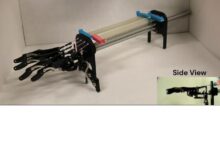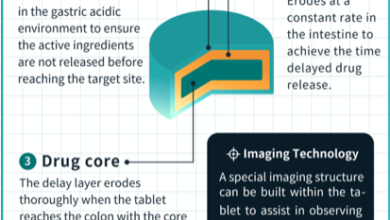
promising future for the treatment of hearing loss
[ad_1]
By Nawal Ouzren, CEO of Sensorion
Therapy for inner ear hearing loss remains an unconquered frontier and the unmet needs are vast.
Hearing loss is expected to affect nearly 2.5 billion people by 2050, largely due to a multifactorial influence including genetics, health conditions, lifestyle choices and environmental factors.
Sensorineural hearing loss, which affects the inner ear and transmission of sound to the brain, is the most common sensory deficit in humans affecting more than 90 percent of individuals with hearing loss. Most cases are caused by degeneration of key structures of the sensory pathways in the cochlea, such as the sensory hair cells, primary auditory neurons, and their synaptic connections with hair cells.
cochlea
The auditory portion of the inner ear, the cochlea, is a very delicate and small organ that is difficult to access, making treatment a challenge. Within the cochlea are more than 15,000 sensory cells known as outer hair cells and inner hair cells, each of which has a different function in the process of hearing.
Soft sounds are amplified and attuned by the nearly 12,000 outer hair cells, while the approximately 3,500 inner hair cells are mostly responsible for the precise differentiation of different sound frequencies and the transmission of sound into the auditory nerve. Unlike other cells in the body, the hair cells in the cochlea cannot divide or regenerate on their own.
There are no approved therapeutic solutions for genetic hearing loss and the lifelong consequences are profound and extend beyond the immediate disease state. Hearing loss is associated with a wider range of communication and social challenges, including delays in speech, language, and social skills, unemployment, isolation, and depression, and can be linked to cognitive decline and dementia.
Revolutionizing the treatment of hearing loss with gene therapy
Today, hearing loss is treated with hearing aids and implants, and comes with accessories, job support, and other social support initiatives. Gene therapy offers the potential for a one-time treatment with broad health, social and economic benefits, allowing patients to be treated before the additional effects of hearing loss develop and minimizing reliance on hearing aids and implants.
With advances in hearing loss research, there are many reasons to remain optimistic. Professor Christine Petit and her team at the Pasteur Institute in Paris, were the first to decipher the molecular physiology of the auditory system, based on identifying the genes responsible for the early form of deafness in humans. Professor Petit’s current work places focus on understanding the cellular and molecular mechanisms underlying sound processing in the auditory system, to identify defects in these processes that cause hearing loss, and to prevent and treat these defects.
The long-term value provided by gene therapy for the inner ear includes the potential for a reasonable price, especially since the cochlea is a small organ and only small doses are required. Since hair cells do not regenerate in the inner ear, this further strengthens gene therapy as an optimal therapeutic agent. Regulators are also becoming increasingly comfortable with gene therapy with several now approved in the US, EU and Asia for eye disease, which has strong parallels to ear from a developmental perspective.
As a scientific community, we have the potential to change the lives of patients living with hearing loss and help them live lives of limitless connection by setting new standards of care through the imminent breakthrough of gene therapy.
[ad_2]
Source link






